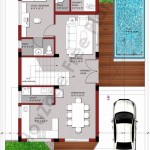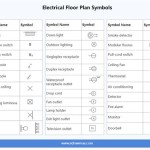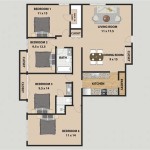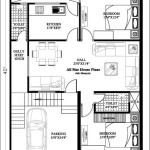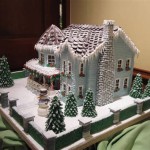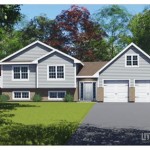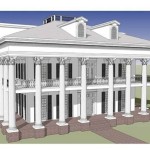Navigating Design Challenges: House Floor Plans for Sloping Blocks
Building a house on a sloping block presents unique design challenges that require careful consideration and creative solutions. From maximizing views to ensuring proper drainage, architects and homeowners must work together to create functional and aesthetically pleasing living spaces.1. Embracing the Terrain:
Slopes can offer opportunities for dramatic architectural statements and exciting design elements. By incorporating the slope into the design, architects can create multi-level living areas, cascading terraces, and stunning views.2. Optimizing Views:
Sloping blocks often provide panoramic vistas, making it essential to position the house to take full advantage of these views. Careful placement of windows, balconies, and outdoor living areas can maximize the visual impact of the surrounding landscape.3. Creating Functional Spaces:
The layout of the house should consider the slope's orientation and the need for separate living areas. Split-level designs can create distinct zones for different activities, while open floor plans can promote a sense of spaciousness.4. Addressing Drainage and Water Management:
Proper drainage is crucial to prevent water damage and erosion. Architects must design drainage systems that effectively channel rainwater away from the house, ensuring the stability of the structure.5. Retaining Walls and Terraces:
Retaining walls can help stabilize slopes, create level areas for construction, and add visual interest to the landscape. Terraces can be incorporated to create outdoor living spaces and extend the living areas into the surrounding environment.6. Energy-Efficient Design:
Sloping blocks can offer opportunities for energy-efficient design. Proper orientation can minimize energy consumption for heating and cooling, while incorporating natural ventilation and lighting can reduce reliance on artificial systems.7. Cost Considerations:
Building on a sloping block can involve additional costs, such as retaining walls, special foundations, and specialized construction techniques. Careful planning and budgeting are essential to ensure a successful project.8. Safety and Accessibility:
Sloping blocks may require special considerations for safety and accessibility. Adequate lighting, handrails, and non-slip surfaces are essential to prevent accidents. Ramps or elevators may be necessary to ensure accessibility for all occupants.9. Landscaping and Integration:
Landscaping plays a crucial role in harmonizing the house with its sloping surroundings. Careful selection of plants and materials can help blend the structure into the landscape, creating a cohesive and visually appealing design.10. Local Regulations and Permits:
Building on a sloping block may require specific permits and compliance with local regulations. Architects and homeowners should consult with local authorities to ensure compliance with all relevant building codes and zoning requirements. By addressing these challenges creatively and thoughtfully, architects and homeowners can create stunning and functional homes on sloping blocks, transforming them into unique and livable spaces.
Home Designs For Sloping Blocks Mark Lawler Architects

Floor Plan Friday Sloping Block With Level Rear

Building On A Sloping Block

Home Designs For Sloping Blocks Mark Lawler Architects

Sloping Blocks From Obstacles To Opportunities

Split Level Home Designs For Sloping Blocks G J Gardner Homes

Impressive 23 Sloping Block Homes Designs For Your Perfect Needs Jhmrad Lot House Plan Townhouse Design

Sloping Block House Designs Beautiful To Inspire Your Next Build

Sloping Block Homes Bildy Home Builders In

Sloping Block House Designs Upward Downward Split Level

